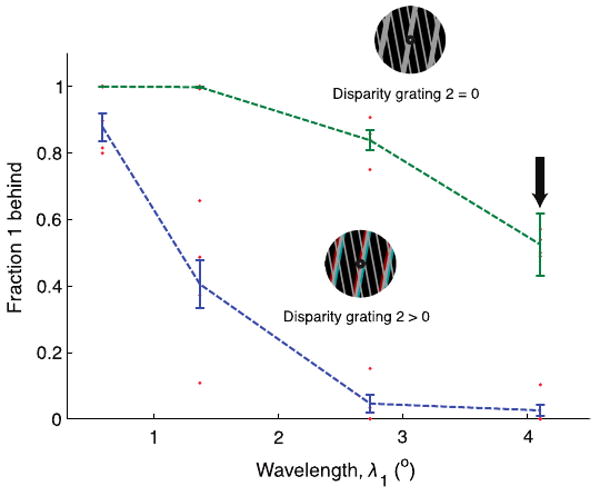Figure 6.

Wavelength differences can override binocular disparity as a depth cue. The fraction of time that grating 1 is perceived as being behind grating 2 is plotted as a function of the wavelength of grating 1 for two disparity conditions. In one condition, both gratings had zero disparity (top, green curve) whereas in the other condition grating 2 had positive disparity (bottom, blue curve). The positive disparity made grating 2 appear clearly behind grating 1 and the fixation point when the two gratings had the same wavelength (λ1 = λ2 = 4.1°, indicated by the arrow), but reducing λ1 (while keeping λ2 fixed) could counteract the disparity and cause grating 1 to be seen behind more often (the reader might check this by using red/green glasses with the red filter positioned in front of the left eye).
